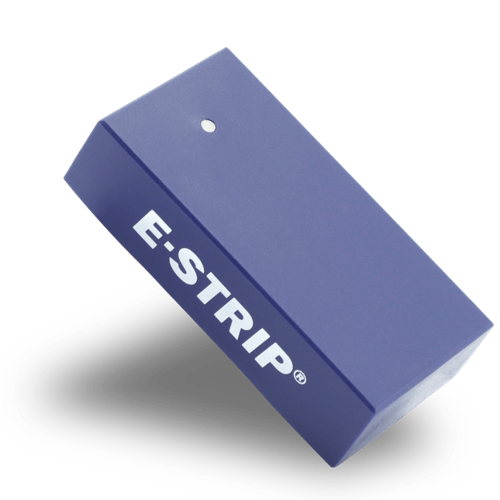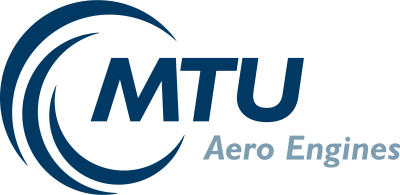E-Strip
E-Strip® Background
The current method to measure peening intensity uses Almen strips which have been developed in the 1930’s and have not evolved significantly in decades. The use of Almen strips is expensive in labor cost and machine usage as it requires peening of several metal strips at different times in order to generate a saturation curve. Once the saturation curve has been obtained, one must use the 10% rule to find the intensity. This rule requires several mathematical manipulations which make it complicated for most operators. Because of these limitations, production verification of intensity is kept to a minimum and the quality assurance of individual parts is maintained by tracking other process parameters.
E-Strip® Objective
It is our objective to introduce an easier, faster, better and greener electronic sensor for intensity measurement and verification. The use of Almen strips requires that you measure pre-bow of the strip, install the strip on the holder, peen the strip for a period of time, remove the strip from the holder and measure the arc height of the strip with a dedicated gage. All these steps are required simply for an intensity verification. It you need to generate a saturation curve, these steps have to be repeated for a minimum of 4 Almen strips peened to different periods of time. All this data is then entered in a dedicated software to generate a saturation curve using curve fit algorithms in order to determine the Almen intensity using the 10% rule .
With the E-Strip®, all these steps are eliminated. The peening media stream runs over the E-Strip® sensor, the impact force of each particle is recorded, a proprietary algorithm is used to calculate the energy of the stream and the data is sent to a nearby computer wirelessly. The computer relates the data back to the Almen intensity and the value is displayed almost instantaneously. Wow…what an amazing time saving!
Advantages of Using the E-Strip®
The E-Strip® offers several advantages over the old method of measuring peening intensity:
- Faster:
– Less setup time because the E-Strip® can be mounted permanently on the fixture and reused hundreds or thousands of times
– Data sent wirelessly to computer for rapid results even during production - Simpler:
– No saturation curve or intensity calculation
– Peening time is not an important factor to determine intensity - Greener:
– Reusable technology, one unit replaces a large number of disposable strips - Cheaper:
– Reduction in cost of shipping, storage, etc. - Smarter:
– Record peening data for each part peened (great for quality assurance)
– More data on your process (intensity histogram, no. of impacts, temp., etc.)
Part of a new trend known as the Internet of Things (IoT)
Move your company to the latest industrial revolution – Industry 4.0
E-Strip® Description and Capabilities
The E-Strip® has the same size as a J442 Test Strip Holder with the same five M5 screw pattern of 24mm x 40mm. It will therefore fit on most fixtures where it will be easy to remove existing test strip holders and replace them with E-Strip®.
The sensor was designed and built by Shockform exclusively for measuring the impact force of peening media. More than 4 years of Research and Development has gone into the design of the E-Strip®.
The E-Strip® is CE certified and meets all safety and emissions requirements. Individual impacts are recorded during the peening process when media particles hit the load cell.
Each impact has a different level of energy because of the size, hardness and velocity of the media particle. The impacts are recorded and sorted by a processor and a proprietary algorithm is used to calculate an output voltage that correlates to Almen intensity. The sensor output is transferred via wireless communication to custom software on a Windows computer.
Sensors are available for A strip intensity range from 0.10mmA (0.004 inch A) to 0.30mmA (0.012 inch A). A lower intensity sensor for N scale peening is also available and a high intensity peening sensor is planned for the near future.
Correlation between Sensor Output and Almen Intensity
The E-Strip® is factory calibrated to output “Equivalent Intensity” for CW28 when using the calibration parameters generated at production. Just like a Magnavalve, the E-Strip® output must be correlated differently to use different media than CW28 or significantly different peening parameters.
The correlation is the relationship between the output voltage of the E-Strip® and the Almen Intensity. This correlation is generated by performing shot peening on the E-Strip® and the Almen strips during the same operation. The correlation is based on two parameters that are calculated. We supply standard correlations on the calibration certificate of each E-Strip®. You can finetune the response of the E-Strip by performing your own correlation using your machine, media, and saturation curves.
Almen intensity is an artificial and indirect measure of impact force as it relates to the arc height deformation of a strip of metal. Eventually, it will be possible to correlate output voltage of the E-Strip® directly to Force which relates to base units of distance, mass and time. This will greatly facilitate the understanding of the peening process.
E-Strip® Computer Software Interface
Several E-Strip® sensors can be used simultaneously. Data is sent using a protected wireless protocol and a special dongle is used to optimize communication to the computer. The E-Strip® uses a rechargeable battery that will last weeks to months depending on your usage.
A dedicated ‘Windows’ based software is available to display the calculated intensity as well as several key process parameters. The software displays intensity, the number of impacts, the battery life as well as the intensity distribution of the different impacts in a histograms and the calculated intensity variation for the last period. The histogram is very useful to determine the effectiveness of your nozzle setup and the number of impacts correlates very well with media flow rate. Other advanced reporting features will be made available as development continues. Shockform will offer the possibility to custom design a report with dedicated logo and format to suit any Customer requirements.
E-Strip® Applications
The new E-Strip®sensor offers the possibility to save considerable manipulation time when determining or verifying intensity. It is a much better choice for the environment.
This is valid for peening with dry media in industries such as Aerospace, Automobile, Nuclear, Energy generation (gas and wind turbine), Industrial and more.














